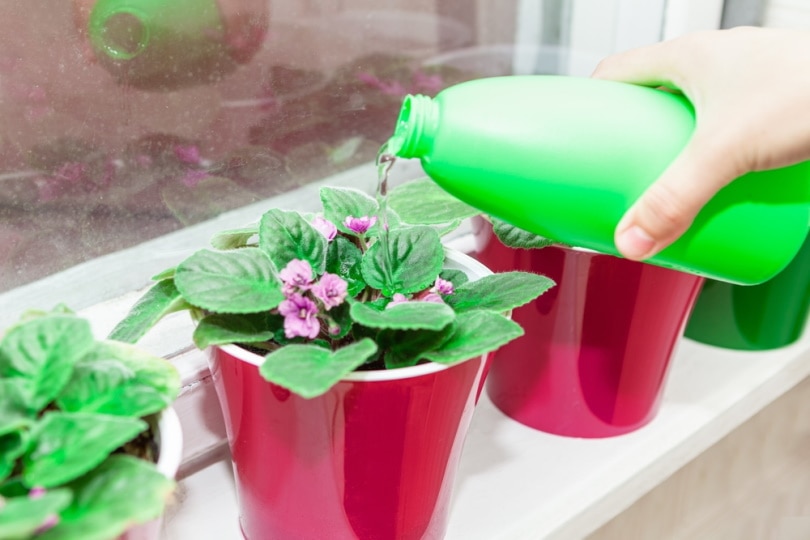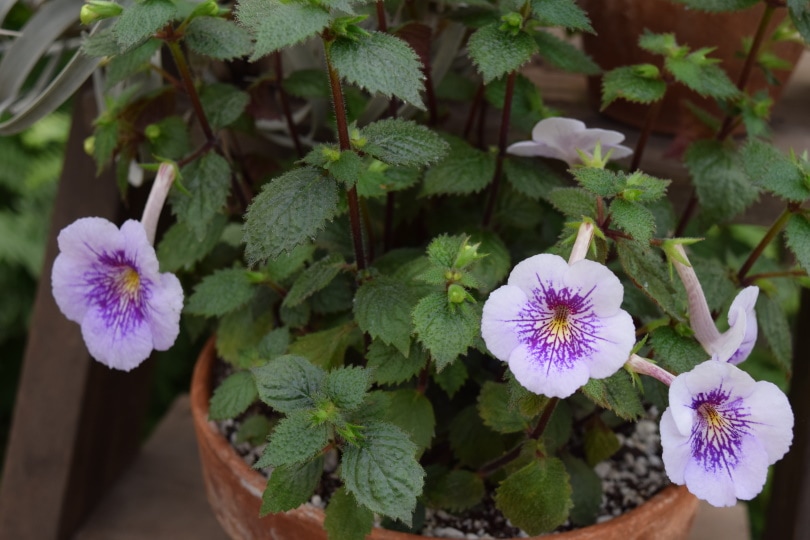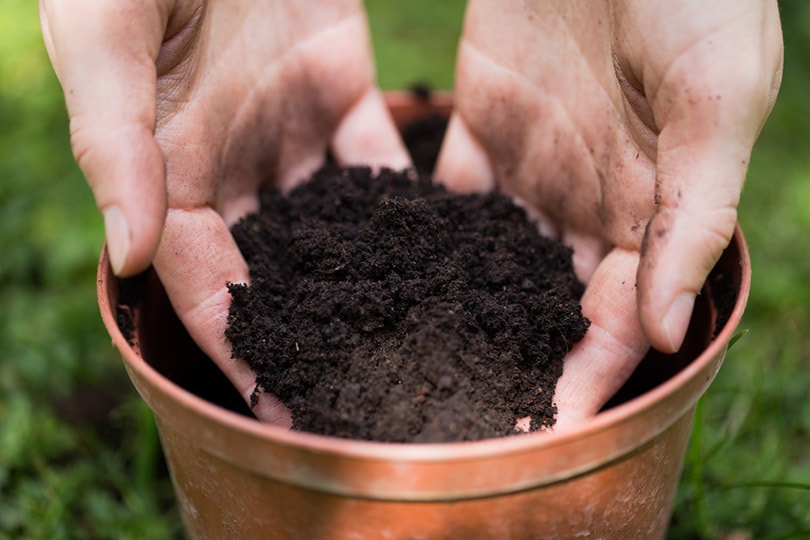How Much & How Often to Water African Violet: Requirements, Conditions, & FAQ
-
Codee Chessher
- Last updated:

African violets are one of the easiest houseplants to grow and take care of, but they have their specific needs like all plants. If you don’t give them enough water or sun, they won’t do very well. They’re especially picky about water! African violets need moist soil to flourish but don’t flood the soil with water. Test it daily to check the moisture level. Before it dries out, water the plant.
When watering African violets, be careful not to get water on the plant’s delicate leaves, which can develop mold. The soil should be well-draining because you definitely don’t want the plant’s roots to sit in water, which can invite fatal root rot. Let’s check out some other relevant info about ideal conditions for African violets below.
Sunlight Requirements
You’ll want to maintain medium to bright sunlight levels for your African violet, erring toward the brighter side when possible. Allowing ample light lets the plant flower more strongly and frequently, with darker plants needing more light to bloom well. With that said, they don’t do well in sweltering conditions, preferring filtered light. For outdoor plants, you can use trees and tall shrubs to shield them. Indoors, use filtered blinds to control sunlight levels.

Soil & Weather Conditions
African violets prefer well-draining, loamy soil with organic additions like peat moss and perlite for drainage. You definitely want a relatively dry potting mix, because persistently moist blends can encourage mold and root rot. The soil should have a loose texture, which is a sign that it drains well.
Most African violets prefer warm conditions between 65°F–70°F, but some varieties do well in cool climates. Higher humidity is always better for these flowers, needing it to stay lush and flower well. Dry climates can make plants weak and wilted, and they won’t have as much foliage. Dark specimens need more humidity than lighter-colored African violets to stay healthy.

Fertilizing African Violets
African violets aren’t picky about fertilizer, but they do benefit from a high-phosphorus potting mix. Phosphorus helps the plant grow strong roots and flower multiple times per year. Nitrogen and potassium are also essential to an extent, with the former governing foliage and the latter boosting overall plant health.
Plants should be fertilized every 2 weeks, according to manufacturer instructions, and you should be careful not to over-fertilize. In most cases, it’s better to under-fertilize, with too much fertilizer risking damage to your plant. If possible, wait until your plant appears yellow, thin, or otherwise sickly.
Other Tips for Caring for African Violets
Although easy to grow, there are some valuable tips that can help you get a head start on keeping your African violets blooming time and time again every year. Let’s check out some general tips for caring for these beautiful flowers.
- African violets prefer slightly basic soil, with an ideal soil pH range of 6.5 to 6.8.
- Keep plants away from air vents and drafty areas to prevent cold air from shocking the plant.
- Pinch off blossoms after they fade to encourage the plant to grow new, fresh blossoms.
- Use room temperature water and avoid watering with cool or chilled water. Cool temperatures can shock the roots of the plant and cause damage.
- African violet leaves are slightly fuzzy and collect dust and dirt easily. You can use a soft brush to periodically dust the plant.
Conclusion
African violets are one of the best houseplants for beginners, yielding numerous blossom periods throughout the year. They’re not hard to care for, but tailoring your routine to its needs will help it thrive and stay beautiful every year.
Featured Image Credit: RussieseO, Shutterstock
Contents

